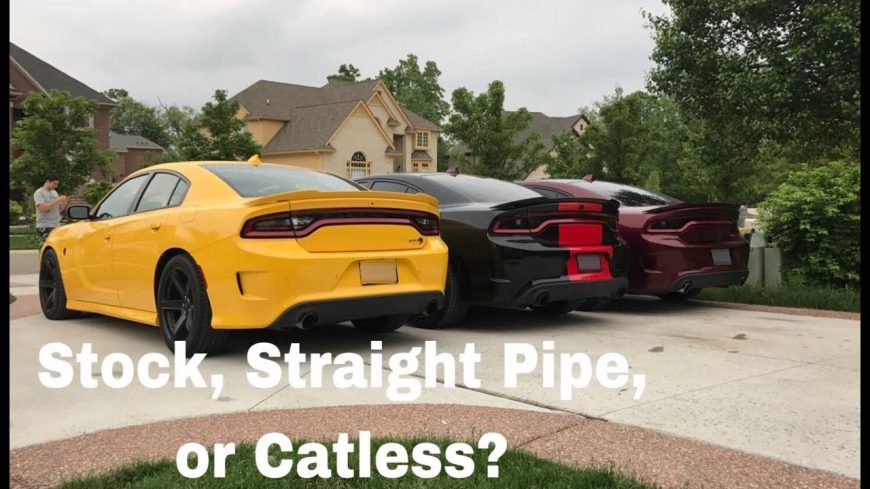Hellcat Charger Exhaust! Which setup sounds the best!?!

I’ll admit, I’m a bit of a harsh critic when it comes to exhaust notes. I’ve always had a very distinct personal preference when it comes to exhaust, leaving me at odds with my fellow gearhead buddies often. It seems for many of my friends, the rule is simple: louder is better. That doesn’t fly with me. I’m all about loud, but for me, the tone is much more important that the volume. Most exhausts for your everyday sports cars – Mustangs, Camaros, Chargers and Challengers, to name a few – use the reduction of obstruction as an excuse to get rid of any effective “muffling”, leaving little more than straight pipes, perhaps with a canister-style muffler to knock a decibel or 2 off the dB meter readings.
I get it. Most people would prefer better breathing at the expense of a nice, throaty exhaust note. The never-ending pursuit of horsepower dictates such, and I’m not mad at anybody trying to squeeze every last bit of power out of their ride. However, when it comes to exhaust note, I do prefer a little tone over outright obnoxious volume, even at the expense of a few horsepower.
Dodge’s Hellcat Charger has quietly won over a place in my heart as a 700+ horsepower family hauler with four doors and undeniable good looks. While the stock exhaust sounds pretty awesome, there are a couple of options out there to free up some restriction in the rear of the system while also adding some more bark to the blown Hemi’s potent bite. This video shows a great side-by-side comparison of a stock exhaust system, one with straight pipes, and one with straight pipes and the catalytic converter removed.
The cars are cold-started in that order, then given a few revs once the engine has warmed up a little. You can hear a pretty distinct difference in each setup, and honestly I have to say they all sound pretty good, at least in this video. Hopefully if you’re planning to upgrade the exhaust on your Charger, this video will help you with choosing exactly what you want.

